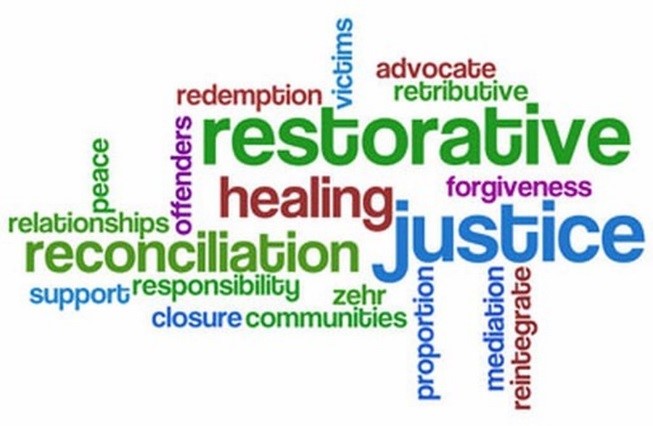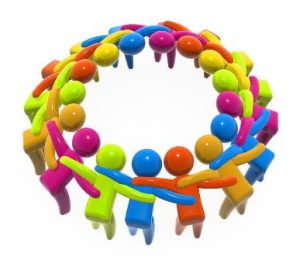
December 13, 2018, by Rupert Knight
How can the building of ‘relationships’ maintain good classroom management?
The importance of mental health and well-being of children has become an important focus within education. In this post Esther Fulton considers the role of positive relationships in creating a nurturing classroom environment.
The DfE has recently published a paper that highlights the importance of schools creating ‘safe and calm environments’ and ‘equipping pupils to be resilient so that they can manage the normal stress of life effectively’ (p.6). Well-being is linked closely to how behaviour is managed within schools. Being in charge of a classroom of thirty or more children and ‘managing’ their behaviour is at the forefront of every beginner teacher’s head as they start their teacher training course. The fear of not being in control of pupils is daunting and intimidating. Knowing how to put appropriate strategies into place to work effectively with their pupils is something that will be ongoing for much of their training year- and beyond. Feeling confident that they have developed a good working relationship with their pupils then leads to everything else within the classroom becoming more effective.
The importance of behaviour for learning
As Tom Bennett states in his 2017 report Creating a Culture:
‘Behaviour in school classrooms is inseparable from academic achievement, safety, welfare and wellbeing, and all other aspects of learning. It is the key to all other aims, and therefore crucial. Its correct implementation is equally crucial and should be viewed as an issue of the highest strategic importance. Behaviour does not manage itself, except haphazardly’ (p.12)
Hence, in ITE at The University of Nottingham, we refer to ‘behaviour for learning’ rather than ‘behaviour management’.
The ITT behaviour review that came out in 2016 focused on the three Rs of the behaviour curriculum; Routines, Responses and Relationships, the last one being the most relevant to this post. Building up that trust and respect with pupils is at the heart of most behaviour for learning policies. This can be shown as simply as producing class rules and routines together so that the pupils feel like they are being listened to and have contributed to decisions made within their classroom. The intention is to lead pupils to make choices when it comes to making the right decision and remembering to focus on the ‘primary’ behaviour rather than the ‘secondary’ behaviour.
As Bill Rogers shows in this film, we need to learn to ‘tactically ignore’ the behaviours that are not as important. It is so easy to be dragged into discussions regarding the ‘unfairness’ of the sanction instead of focusing on the rule that they are not adhering to. Jarlan O’Brien describes a situation that he came across in his school where a child had been asked to leave the dining room for causing a disruption. The pupil refused to leave, and it became a public stand-off. Eventually the pupil left but turned over some furniture and swore profusely at the Headteacher as he exited. The Headteacher carried on the lunchtime as normal and then went out to speak to the pupil. Some staff were unhappy about how the Headteacher had dealt with the situation and believed the pupil had ‘got away with it’.
‘The Headteacher politely listened then said, ‘I asked Drew to leave the room. He left the room. He did what I asked him to do. Am I happy with how he left the room? No. I ignored his secondary behaviour (the swearing) and I dealt with it afterwards away from an audience.’
(O’Brien, 2018, p.33)
How often have we as educators made poor choices regarding the ‘behaviour’ we have focused on, which has led to pupils feeling rejected, isolated or undervalued?

Restorative Justice
Many schools are now turning to using restorative justice practices to help develop safe and caring school environments that will also support the academic purpose of their school as well as the well-being of pupils. The nature of restorative justice is summed up in this article. Just as teachers want to build good relationships with their pupils, restorative justice focuses on pupils ‘building and repairing’ good relationships amongst themselves (Vaandering, 2014).
In school a child should be learning life skills as well as academic ones and for every child to have the best possible opportunities schools should be as inclusive as possible. Promoting the well-being of all children with a view to supporting their development in life after education is surely an important element for all teachers. The Every Child Matters document viewed education as having a socialisation role and that pro-social behaviour that was learnt within school would continue outside the school boundaries. It stated that schools should help children to develop positive relationships and self-confidence.
In order to help children to develop these skills, we need to offer them a voice and choice in their decisions and to highlight the importance of relationships and community at every opportunity in school. We also need to help develop ourselves as teachers into valuing our pupils highly and unconditionally and encourage them to make decisions as active members of a class/school community. Restorative justice creates time and space for pupils to respond, appreciate, understand and acknowledge the impact of their actions and to have the opportunity to take steps to repair any damage done to relationships. However, restorative justice does not have to involve ‘formal’ conferences between the children involved in the ‘misbehaviour’. Many schools are now using circle time effectively to allow everyone in the class to have the opportunity to speak and listen in a safe environment. The following simple format could be used to open discussions and establish what has happened in order to ‘restore’ certain situations:
-
Gather information from everyone -‘What happened? Do you agree with that? Anything to add?’
-
Establish impact-‘Who has been affected by this? How?’
-
Solution-‘What do you need to do to fix this? What about you? Are you all happy with this solution?’
(O’Brien, 2018)
Circle time is appropriate for any age group and it is a chance for pupil-voice to have an impact in the behaviour for learning in the classroom and around the whole school environment. The restoring of relationships and rebuilding trust and stability must surely be the focus of all school behaviour policies.
Some questions to ponder:
-
What is your school’s response to conflict? How restorative do you think it is?
-
Does your school aim to change behaviour by allowing children to understand the impact their behaviour has on relationships with others?
-
Could there be more of a focus on the well-being of your pupils through your behaviour for learning policy?
References:
O’Brien, J., 2018. Better Behaviour: A Guide for Teachers. London: SAGE.
Vaandering, D., 2014. Implementing restorative justice practice in schools: What pedagogy reveals. Journal of Peace Education, 11(1), pp.64-80.

I think there is a constant tension in this debate between the ‘zero-tolerance…consistency is our watchword’ approach and the more nurturing ‘behaviour is communication’ approach. It sometimes seems to me that the DfE want their cake and eat it – on the one hand asking senior leaders to be rigorous in supporting teachers via a consistent application of the behaviour policy’s sanctions but on the other hand expecting schools to show flexibility in dealing with the challenging behaviours seen from an increasing number of children with communication, social and emotional needs and thereby minimising exclusion.
The answer is of course better support for these pupils but as any school leader will tell you there is a huge hole in SEN funding – Nottinghamshire have had to raid reserves in an attempt to meet the rapidly escalating number of very valid requests for SEN and D funding. Meanwhile schools place more and more demanding children in classrooms with less and less support.